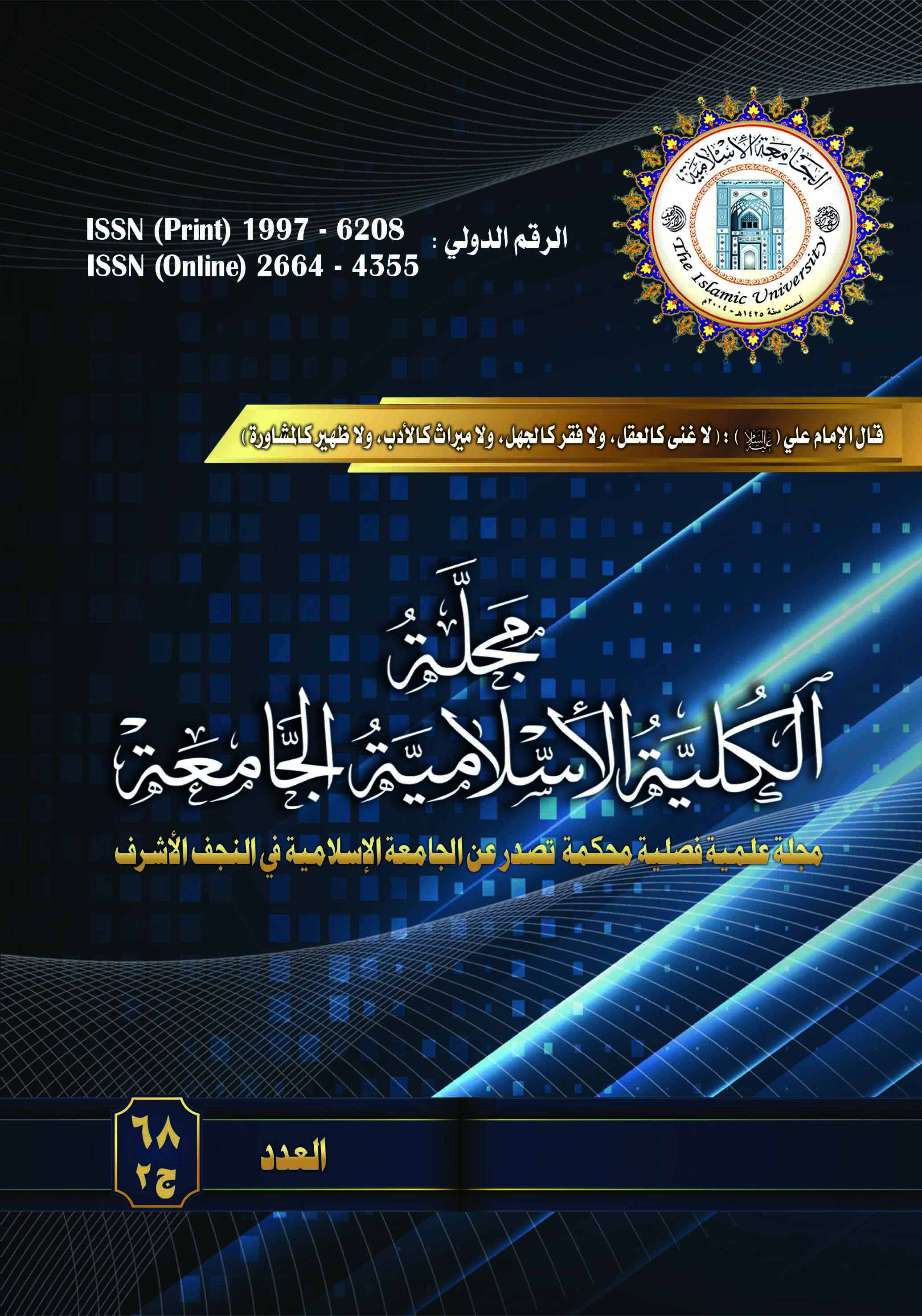Abstract
Abstract:-
The Razavi shrine in the holy city of Mashhad, apart from the honorable resting place of Imam Rida (as), which is a refuge for the helpless, has other sacred symbols that are placed in the religious memory of pilgrims and play a significant role in representing their religious culture; among them is the symbol of "playing the Naqqara". The present study tries to study the phenomenology of this symbol in order to discover the mental meanings of the pilgrims around whom they have lived the experience. The research method is content analysis of information and findings collected through interviews, observation, and review of documents. The results show, based on the beliefs of the pilgrims of the Razavi shrine (Emic method), that playing the Naqqara is “full of hope and joy”, “transforming”, “calming and sedative”. The pilgrims believe that the sound of the Naqqara is a sign of the connection between heaven and earth, and when they hear it, they are enchanted by the grandeur of the sanctuary; and they feel themselves in the refuge of their imam, and believe that the perception of those moments as a gift and a promise from Imam Rida (as) to accept them. But playing the Naqqara based on the researcher's semantic (Etic approach), it includes the meanings of “sanctification”, “acquisition of religious experience and closeness to God”, “supplication and mediation” and “special care from God Almighty”.
The Razavi shrine in the holy city of Mashhad, apart from the honorable resting place of Imam Rida (as), which is a refuge for the helpless, has other sacred symbols that are placed in the religious memory of pilgrims and play a significant role in representing their religious culture; among them is the symbol of "playing the Naqqara". The present study tries to study the phenomenology of this symbol in order to discover the mental meanings of the pilgrims around whom they have lived the experience. The research method is content analysis of information and findings collected through interviews, observation, and review of documents. The results show, based on the beliefs of the pilgrims of the Razavi shrine (Emic method), that playing the Naqqara is “full of hope and joy”, “transforming”, “calming and sedative”. The pilgrims believe that the sound of the Naqqara is a sign of the connection between heaven and earth, and when they hear it, they are enchanted by the grandeur of the sanctuary; and they feel themselves in the refuge of their imam, and believe that the perception of those moments as a gift and a promise from Imam Rida (as) to accept them. But playing the Naqqara based on the researcher's semantic (Etic approach), it includes the meanings of “sanctification”, “acquisition of religious experience and closeness to God”, “supplication and mediation” and “special care from God Almighty”.
Keywords
Phenomenology
playing Naqqarah.
Razavi shrine
Abstract
الملخص:-
العتبة الرضوية في مدينة مشهد المقدسة، بصرف النظر عن المضجع الشريف للإمام الرضا a، وهو ملجأ للمضطرّين، له رموز مقدسة أخرى يتم وضعها في الذاكرة الدينية للزوّار المتشرفين وتلعب دورًا مهمًا في تمثيل ثقافتهم الدينية؛ منها ظاهرة ((عزف النقارة)). تحاول الدراسة الحالية دراسة فينومينولوجيا هذا الرمز لاكتشاف المعاني الذهنية للزاوّار الذين لهم التجارب الحية حوله. طريقة البحث هي تحليل مضامين المعلومات والنتائج التي تم جمعها من خلال المقابلة والمشاهدة ومراجعة الوثائق. وتظهر النتائج استناداً إلى معتقدات زوار الحرم الرضوي (منهج Emic) أنّ عزف النقارة يعتبر ((مفعماً بالأمل والبهجة))، ((محوّلا))، ((مهدّئاً و مُسكناً))؛ و إنهم يرون أن صوت النقارة علامة على الإرتباط بين السماء والأرض، وعندما يسمعونه يسحَرون بعظمة الحرم و فخامة صاحبه فيشعرون بأنفسهم في لجوء إمامهم؛ و أنّ إدراك هذه اللحظات، هدية و بشري من جانب الإمام الرضا a لقبولهم. واستناداً إلى المنهج الدلالي للباحث (منهج Etic) يشمل معاني ((التقديس)) و ((اكتساب التجربة الدينية والقرب من الله)) و((الإستدعاء والوساطة)) و((عناية خاصة من الله تعالى)).
العتبة الرضوية في مدينة مشهد المقدسة، بصرف النظر عن المضجع الشريف للإمام الرضا a، وهو ملجأ للمضطرّين، له رموز مقدسة أخرى يتم وضعها في الذاكرة الدينية للزوّار المتشرفين وتلعب دورًا مهمًا في تمثيل ثقافتهم الدينية؛ منها ظاهرة ((عزف النقارة)). تحاول الدراسة الحالية دراسة فينومينولوجيا هذا الرمز لاكتشاف المعاني الذهنية للزاوّار الذين لهم التجارب الحية حوله. طريقة البحث هي تحليل مضامين المعلومات والنتائج التي تم جمعها من خلال المقابلة والمشاهدة ومراجعة الوثائق. وتظهر النتائج استناداً إلى معتقدات زوار الحرم الرضوي (منهج Emic) أنّ عزف النقارة يعتبر ((مفعماً بالأمل والبهجة))، ((محوّلا))، ((مهدّئاً و مُسكناً))؛ و إنهم يرون أن صوت النقارة علامة على الإرتباط بين السماء والأرض، وعندما يسمعونه يسحَرون بعظمة الحرم و فخامة صاحبه فيشعرون بأنفسهم في لجوء إمامهم؛ و أنّ إدراك هذه اللحظات، هدية و بشري من جانب الإمام الرضا a لقبولهم. واستناداً إلى المنهج الدلالي للباحث (منهج Etic) يشمل معاني ((التقديس)) و ((اكتساب التجربة الدينية والقرب من الله)) و((الإستدعاء والوساطة)) و((عناية خاصة من الله تعالى)).
Keywords
الفينومنولوجي، العتبة الرضوية المقدسة، عزف النقارة.
